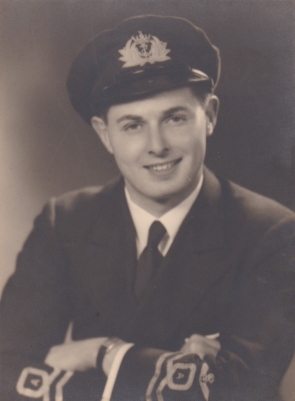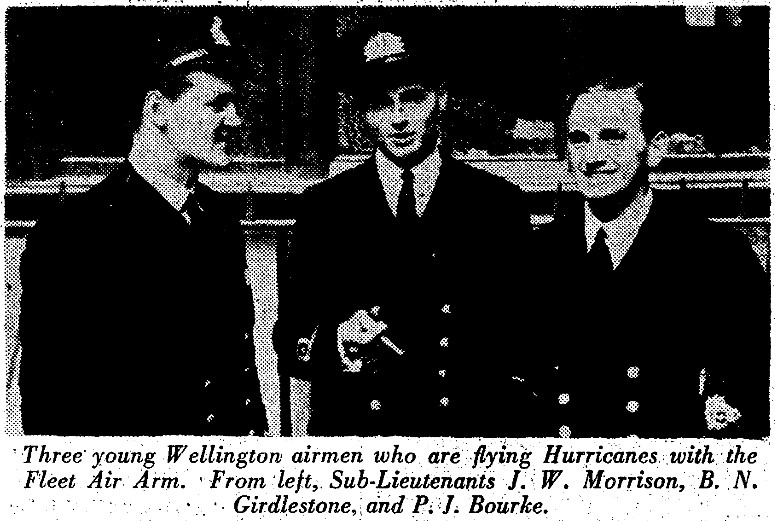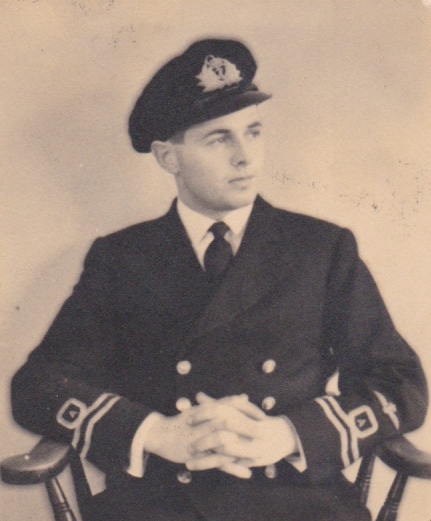Grumman Martlet I, AM975, Cloughfin, Donegal, 1941
On the 21st of December 1941, a young pilot from Wellington,
New Zealand, strapped himself into the cockpit of a brand new
Grumman Martlet fighter on the deck of the Royal Navy's aircraft
carrier HMS Illustrious. She had sailed from Norfolk,
Virginia only a few days previous with twenty three of these new
fighter aircraft for the Fleet Air Arm. Illustrious and
her sister carrier, HMS Formidable had been in the USA
undertaking repairs to combat damage from operations earlier in
the year in the Mediterranean. On the night of 15/16
December 1941, the two ships collided in the Atlantic causing
Illustrious to have to have further repairs in Birkenhead into
the new year in 1942.
The compliment of Martlets were launched from Illustrious that
afternoon bound for the naval air stations at Abbotsinch and
Machrihanish in Scotland.
At around 1600A hours an aircraft attempted to land in the
townland of Cloughfin near the village of Carrigans on the banks
of the Foyle River, as little as two miles from the border with
Northern Ireland. The field on which it landed
unfortunately was unable to sustain the aircraft's wheels and it
dug in, causing the aircraft to somersault and ending up on it
back. The pilot was assisted from the aircraft by two
members of the Irish police, the Gardai, who dug him out watched
by a gathering crowd of onlookers.
 He was taken in a car to the Garda station in the
village where he learned he was in neutral Ireland, or Eire and
not as he had hoped in Northern Ireland. And so began the
twenty two month internment of Sub-Lieutenant Bruce Nathaniel
Girdlestone. Bruce was born in in Wellington in September
1917 to Linda and Cyril Girdlestone. He studied
Architecture at the University of New Zealand.
He was taken in a car to the Garda station in the
village where he learned he was in neutral Ireland, or Eire and
not as he had hoped in Northern Ireland. And so began the
twenty two month internment of Sub-Lieutenant Bruce Nathaniel
Girdlestone. Bruce was born in in Wellington in September
1917 to Linda and Cyril Girdlestone. He studied
Architecture at the University of New Zealand.
The Otago Daily Times on 22 March 1941 reported on the New
Zealanders undertaking flight training in England with the Fleet
Air Arm. It quoted an English instructor as saying:
"No," he added.- "Most definitely I'm
not shooting a line for your boys just because they are from
the Dominion. Here is proof. Of the 16 New Zealanders in our
last course, three were above average, only one was below
average, and only one was judged unfit for pilot duty. But
he was recommended for an observer. One of them. B. N,
Girdlestone (Wellington), went solo in 7 hours 35 minutes,
and another in 8 hours 15 "minutes. The average time
the whole course required to go solo was 10 hours 30
minutes, which is below the minimum. Just half of that
course were recommended to be fighter pilots, which is well
above the average."
Though printed in March, the story does carry a date of January
10. He and his course were posted from 24 EFTS, Luton to
31 SFTS in Canada, arriving on the 25th of January 1941.
He graduated with wings in May 1941 from 31 SFTS at Kingston,
Ontario, his name being listed in the local newspaper.
He appeared in the
photo below on November 15, 1941 in The Evening Post, just
days from his arrival in Ireland. The men in the photo
with him are thought to actually be S/Lt Peter Gerald Burke
and either Hugh Morrison or John Craig Morrison.
Neither of the two Morrisons from Bruce's class, and likely
therefore to be the other man in the photo survived the war.

At the time of his arrival in Ireland, Bruce was serving with
881 Squadron of the Fleet Air Arm.
Newspapers across new Zealand carried the following story on
the 23rd/24th September 1942: Sub-Lieut.
Bruce Girdlestone, of Wellington, who is in the Fleet Air
Arm and who was interned in Eire recently, has made a second
attempt to escape. He was one among 20. He helped to lift
off the main gates at the second barrier. Ten men got away
but all were finally rounded up. Girdlestone was discovered
last. He spent five days at Dublin before being retaken.
Girdlestone was interned as a result of being forced down in
Eire during aircraft-carrier training operations.
The following month a long article appeared in the "The Press"
newspaper:
 INTERNED
IN EIRE
INTERNED
IN EIRE
FLEET AIR ARM PILOT LONDON. July 24
“Restlessness is the chief irritant in an internment camp in
Eire” writes Sub-Lieutenant (A) Bruce Girdlestone
(Wellington), who crashed in that neutral country while he
was taking part in exercises from an aircraft carrier. “Our
compound is situated on the outskirts of Eire’s largest
military centre,” he says. “The plain on which the huge
collection of buildings stands is called the Curragh, an
extremely desolate spot. To the north lies the bog of Allan,
to the south is the rest of Ireland, and on either side the
rolling green plain ends at Kildare and Kilcullen.
“Five huts form our living quarters. They are built of
wood, raised two feet from the ground to prevent tunneling,
and heated by small iron stoves. Three tall fences of
thickly coiled barbed wire enclose these huts, patrolled by
armed guards, and brightly illuminated by night. The Irish
have had much experience of detention camps and our security
leaves nothing wanting.
“Parole is granted daily. We pass out through a triple set
of gates for our long walks over the Curragh and return for
tea behind the wire. A picture show at the main Eire camp is
our usual nightly outing, but the majority of the evenings
are spent in reading and writing in the camp.
“My smack from the crash last December has healed up and I
am feeling fit once again but restless. Our cosmopolitan
collection includes English, French, Polish, Canadian, and
American pilots, the strength being 30 odd. Immediately
adjacent is the German compound, similar in size and
security, and a tall iron fence prevents us from continuing
the war privately.”
Finally, after twenty-two months interned, Bruce was selected
as one of the Allied internees that would be released in October
1943. After his arrival back in the UK, he and the others
released at that time filed escape and evasion reports with the
MI9 organisation:
1. Internment
I took off from HMS Illustrious, North of Donegal, on 20 or
21 Dec 1941. I came down at CLOUGHFIN, CO. DONEGAL,
the same day and was interned by the EIRE authorities in the
Curragh Camp.
2. Attempted Escapes
(a) On 9 Feb 42 a big attempt was made to escape from the
camp with outside assistance. Ladders were constructed
in the camp, and a number of us were able to get over the
first wire fence. At the second fence, however,
the ladder broke. Several of us were taken to
hospital. I made a break from the hospital. I
was recaptured and had a beating up from two of the Irish
Corporals who had formed part of the escort to the hospital
and who had caught me again. They pinned my hands
behind my back and beat me on the face and head with their
fists. The officer in charge of the detail did not
take any action. A report on this incident was sent to
Sir John MAFFEY, the British representative in DUBLIN.
We were confined to the camp for a fortnight.
At the end of that period I made another attempt, but
was caught getting through the wire.
On 17 Aug 42 the main gate of the camp was levered off its
hinges. Nine men got out that night. Of these the following
got to NORTHERN IRELAND: - F/lt. FLEMING, D.F.C., F/Lt.
KEEFER, R.C.A.F., and Sgt. NEWPORT, R.A.F. The following
were all recaptured within five days: P/O BRADY, Sgt.
HARKELL, F/Sgt. KARNIESKI, F/Sgt Fowler, Capt. BARANOWSKI
and myself*.
I spent the first night under a hedge. On the second night I
got in touch with a man outside whom I knew would be ready
to help, and he put me up at his house for the night. He got
in touch with other helpers, one of whom took me to his
house in Dublin. We went by taxi to another house, but saw
two obvious detectives at the door. We drove on, got out of
the taxi, and walked into another house where I spent the
night. Next night with two helpers I got into a car which
was to take me to the border. We were followed by a police
car.
We drove into a cul-de-sac in a slum
district. Here I jumped out and ran into a backyard. I hid
in a lavatory, and then climbed the wall of the lavatory,
which did not quite reach the roof, into a wood shed. The
lavatory was searched, but the woodshed, which was locked,
was not. A cordon was thrown round the block and the houses
searched. In the woodshed I found a pair of overalls, into
which I changed.
At dusk, when the cordon had been withdrawn and there was
just a policeman posted on the corner, I left the woodshed
by climbing back into the lavatory, and got out of the
district. I had a map and a compass, but found that all the
roads out of DUBLIN were being watched. I spent the night
beside a big bakery near one of the canals. Next morning (22
Aug) as I was returning to town a carload of military police
from the camp passed me. I was seen and arrested.
*The original typed report includes the reference
numbers to the other men's MI9 evasion reports, which I have
left out here for brevity.
Shortly after his release from internment, S/Lt Girdlestone is
found posted to 748 'B' Squadron on the December 1943 Royal Navy
list. In this period, where he had to no doubt refresh his
flying after internment, he possibly suffered two accidents
during landings. On the List of January 1944 shows
him now posted to 1832 Squadron, who were flying Grumman
Wildcat, his old mount, from various escort
carriers. A fellow pilot, Derek Rooke mentions him
in his book, Almost into Wind, as Girdlestone was his commander
in G Flight of 1832 Squadron and also when they went on to serve
as the Wildcat Flight of 852 Squadron on HMS Nabob.
In April 1945 he is with 757 Squadron.
Bruce returned home to New Zealand on the SS Andes in October
1945. He had a long career in architecture.
Bruce was a key person in the 1980's who told his story of being
interned and the many adventures that were had. In 1983,
he made a recording with Radio New Zealand and this is saved in
the NZ National Archives under the title "Prisoner of the Green"
but not available online.
The 1989 publication, "The War Years: New Zealanders Remember,
1939-1945", edited by Anna Rogers included a chapter by Bruce
entitled "Prisoner of the Green". He corresponded with
many of the early writers on the subject including Ryle T Dwyer
for his book, Guests of the State.
Sub-Lt Girdlestone's aircraft, Marlet AM975 was salvaged onsite
and transported across the nearby border. It was not
returned to service. The Martlet was the name assigned by
the Fleet Air Arm to the Grumman Wildcat aircraft carrier
fighter.
Compiled by Dennis Burke, 2025, Dublin and Sligo. With thanks
to the Girdlestone family.
